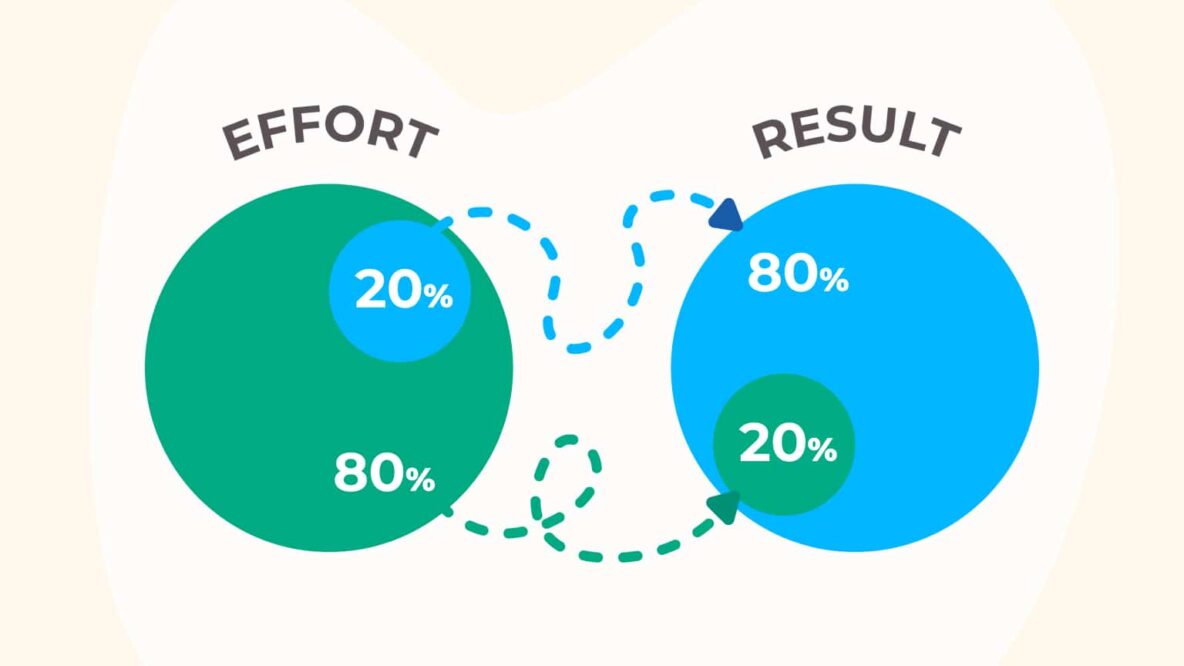If you find yourself in the shoes of a Solopreneur, you’re likely caught in the whirlwind of numerous responsibilities, especially if you’re simultaneously nurturing your brainchild alongside a full-time job.
Whether your endeavors encompass expanding your audience, marketing courses, operating a newsletter, providing contracting services, or managing a large business, chances are your plate is brimming with an overwhelming array of tasks.
However, time remains a finite resource, and it’s crucial to channel your focus towards endeavors that truly make a meaningful impact.
Certainly, you must have encountered Pareto’s Law, which posits that 80% of our outcomes stem from a mere 20% of our actions.
Nonetheless, the true challenge lies in discerning which specific actions constitute that critical 20%.
Thus, in the spirit of sharing an older concept which is worthwhile refreshing, I present to you a straightforward process to identify your most invaluable tasks, enabling you to make the utmost use of your scarce time and energy.
Step 1: Engage in Unrestrained Brainstorming and Compile a Task Inventory
First and foremost, unleash your creativity and set everything down on the table—quite literally.
Employ the timeless approach of pen and paper, jotting down an exhaustive list of all the tasks you juggle within your business.
Account for every aspect, be it content creation, marketing endeavors, customer support, vendor management, product development, or administrative work. Even the tiniest tasks accumulate, so strive to include every conceivable responsibility.
For now, filtering or prioritizing these tasks is of little consequence. We shall address that in due course.
Step 2: Select a Primary Objective and Evaluate Your Tasks
With your task list in hand, it is now time to discern the impact you desire to concentrate on.
Which outcome takes precedence in your grand scheme?
Are you endeavoring to expand your following? Boost subscribers to your newsletter? Drive more traffic to your website? Or increase product sales?
Each objective necessitates a distinct focus, making it vital to pinpoint your most coveted outcome. Let’s dub this your primary objective.
Once you have defined your primary objective, proceed to assign each task on your list an “Impact Score.”
Employ a scale of 1 to 10, assessing the influence each task exerts on your primary objective.
Step 3: Assess Time Allocation for Each Task
Subsequently, make an estimate of the time you typically dedicate to each task on a weekly basis.
This evaluation will shed light on whether your time is being allocated efficiently.
If you’re anything like me, patterns will rapidly emerge.
You will uncover tasks devouring substantial time while yielding scant results towards your primary objective, as well as high-value tasks that you have woefully neglected.
Step 4: Compute Your Impact-to-Time Ratio
Now that you possess both an impact score and a time investment estimate for each task, calculating your impact-to-time ratio becomes a breeze.
Simply divide the impact score by the time spent on the corresponding task.
To illustrate, suppose your primary objective involves augmenting your social media following.
Let us compare two tasks to discern which holds greater value in achieving this outcome:
Task 1: Responding to administrative emails Impact Score: 3 out of 10 Time spent: 3 hours Impact-to-time ratio: 1 (3 divided by 3)
Now, let’s juxtapose this with:
Task 2: Crafting content for Twitter Impact Score: 8 out of 10 Time spent: 2 hours Impact-to-time ratio: 4 (8 divided by 2)
In this example, it becomes evident that the time invested in writing content proves fourfold more influential in expanding your social media following.
Now proceed to conduct this calculation for all tasks in your inventory.
Step 5: Prioritize and Direct Your Energy
Now comes the enjoyable part – arranging your tasks in descending order of value.
Once you’ve accomplished this, you will possess an extensive list of tasks accompanied by their respective impact scores.
Our objective is to identify the tasks that fall within the illustrious 20% referred to by Pareto’s Law.
Suppose you have a total of 30 tasks. Distinguishing the top 20% is a breeze – it comprises the top 6 entries on your list.
By focusing on this elite 20%, you ensure that your time is dedicated to the most precious tasks at hand.
As for the remaining 80% of tasks, you have several options: eliminate, simplify, automate, or delegate. These tasks should not commandeer your precious time!
Remember, the ultimate goal is not necessarily to reduce your workload but to work intelligently and astutely.

